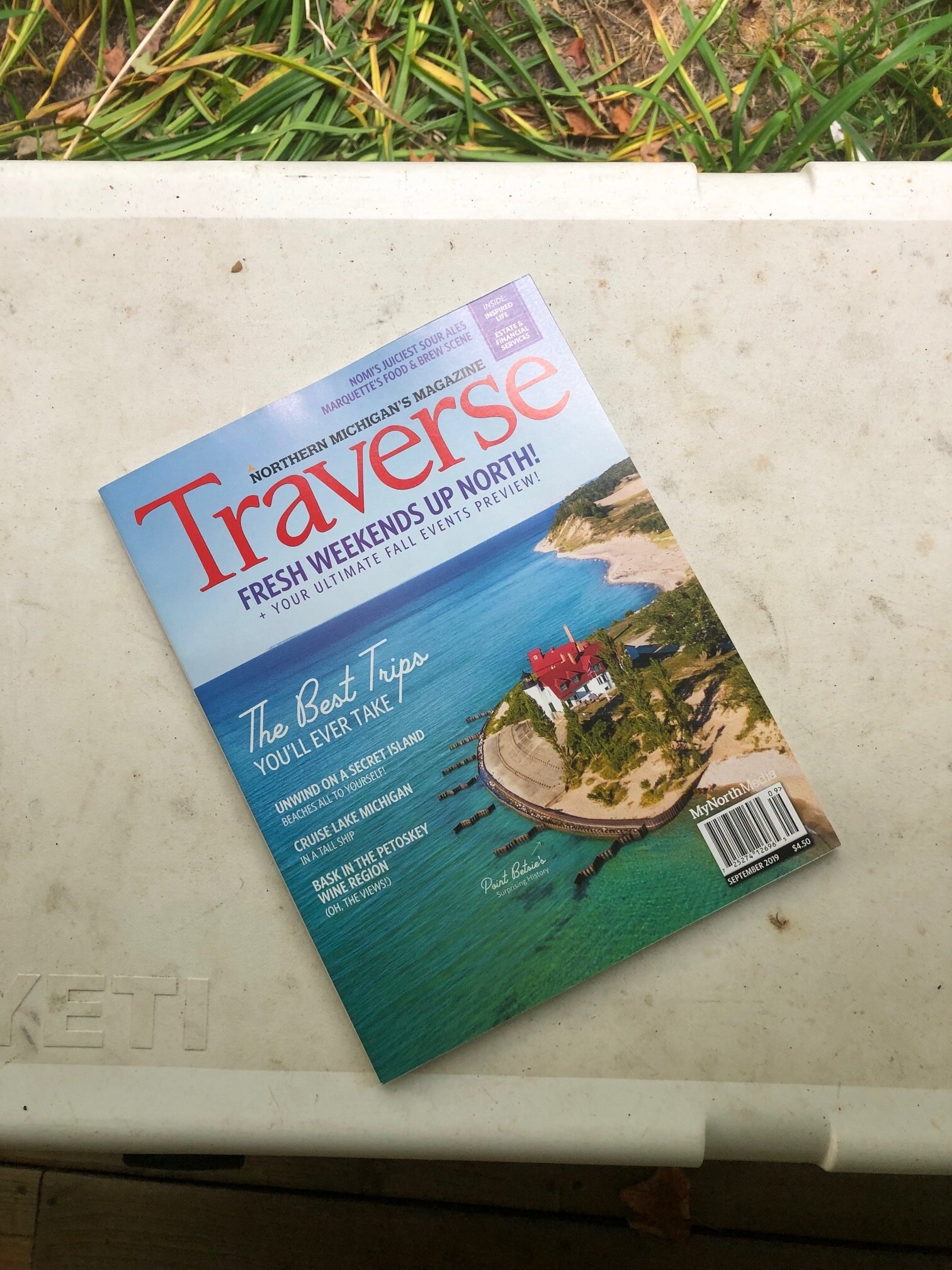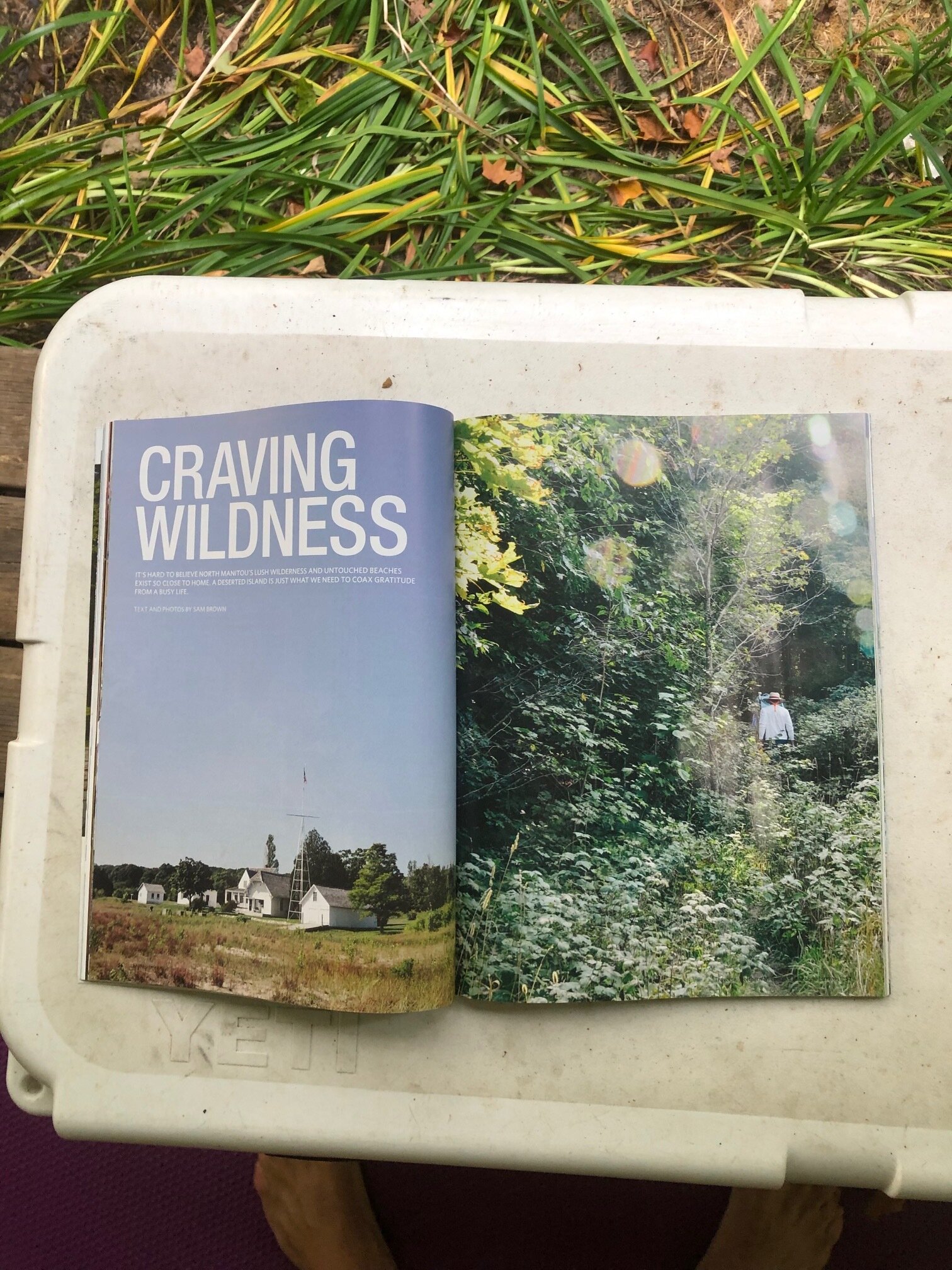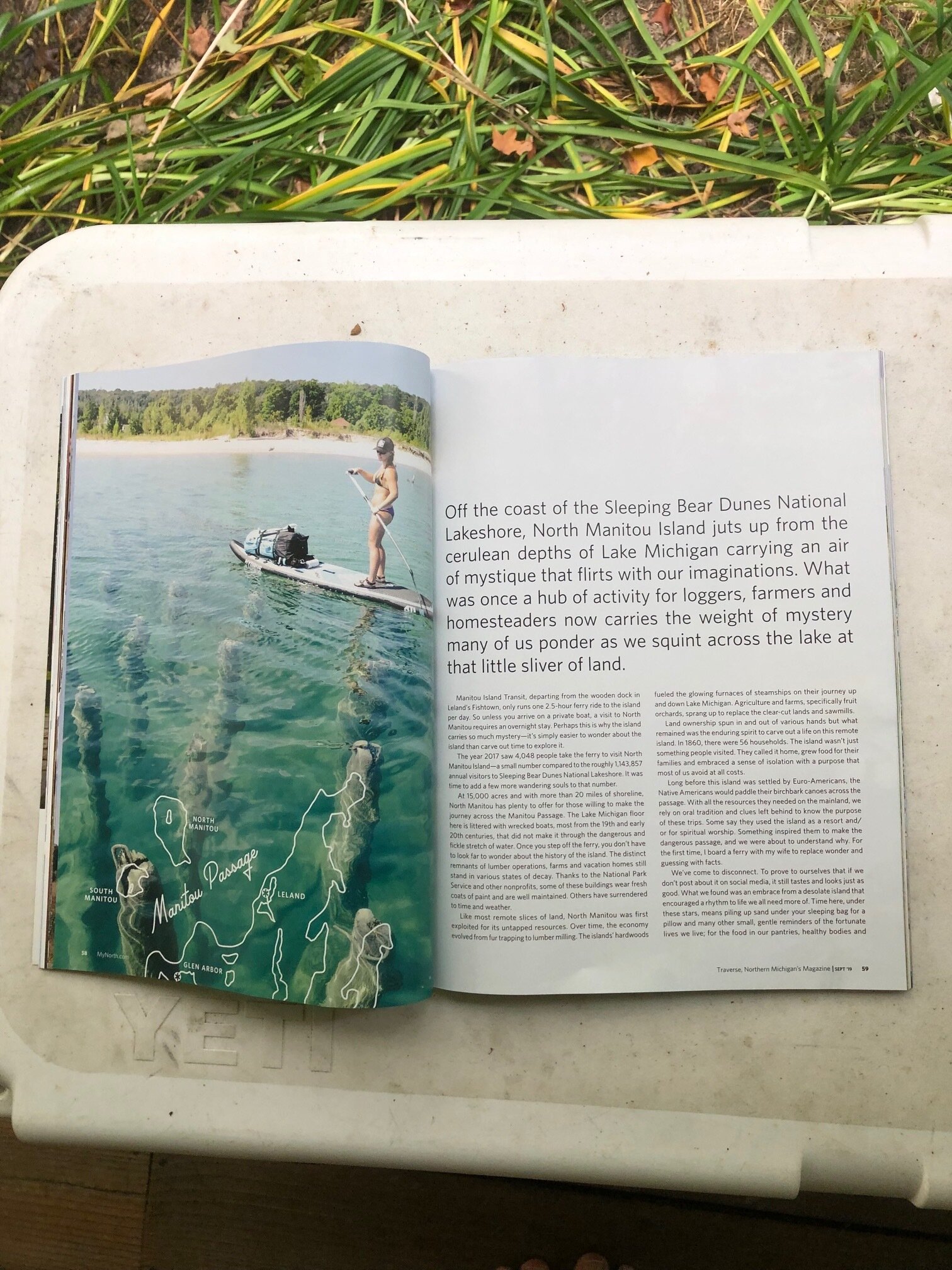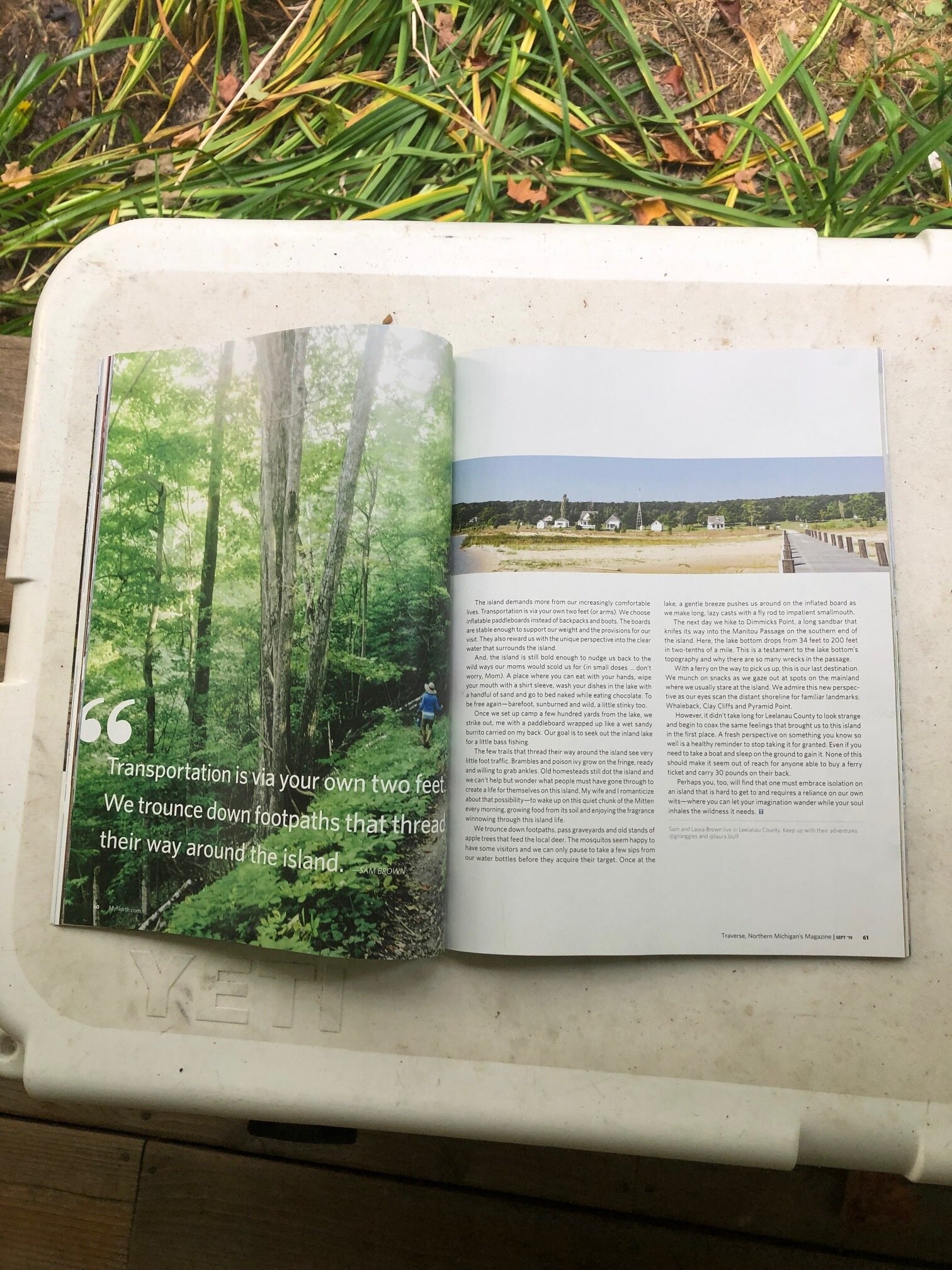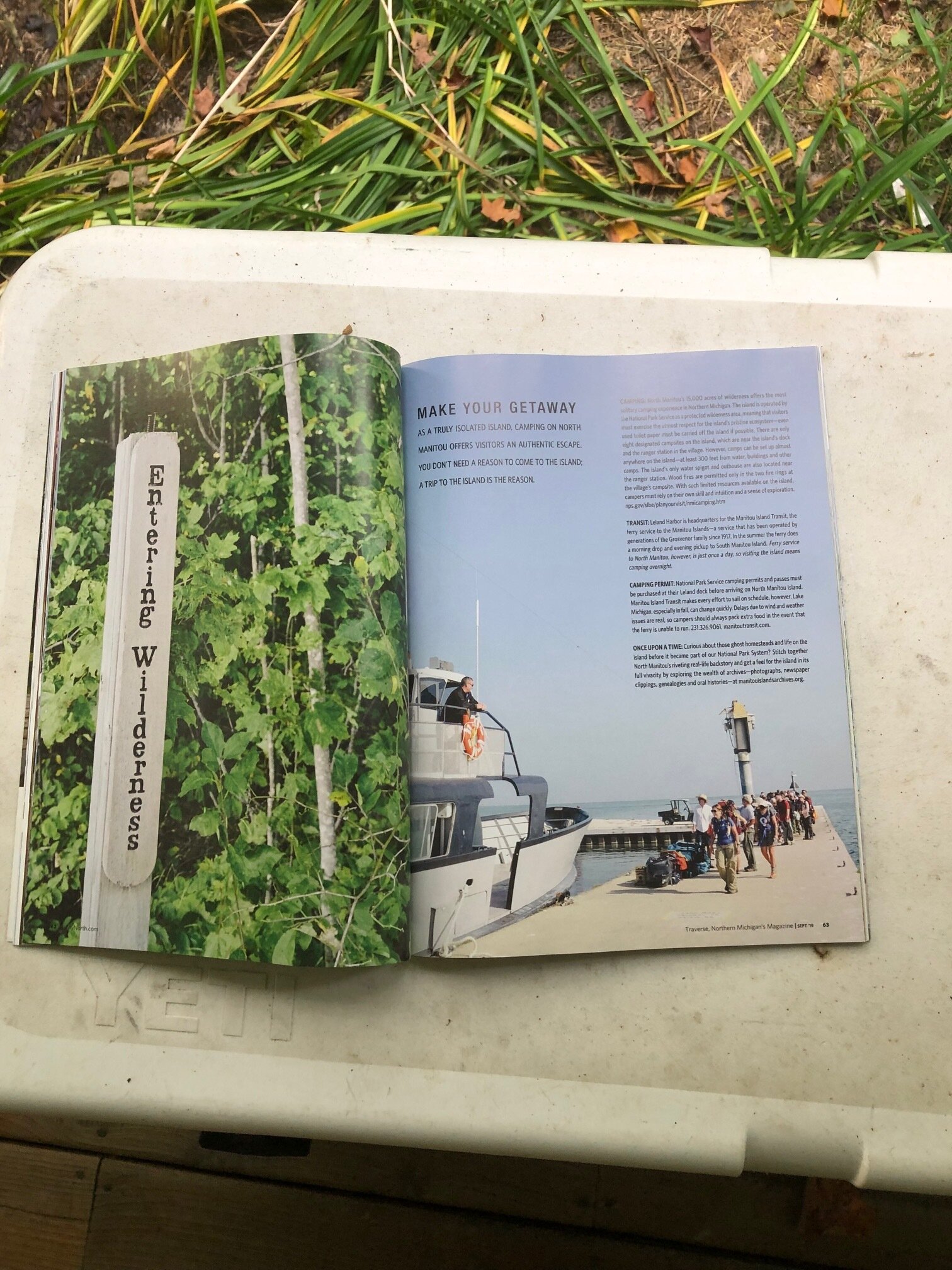Craving Wildness
North Manitou Ferry
North Manitou Island is an enigma begging for a firm hug. Maybe a few wet footprints down its deserted shoreline will do. This landmass that juts up from the cerulean depths of Lake Michigan carries an air of mystique that flirts with our imaginations. What was once a hub of activity for loggers, farmers and homesteaders now carries the weight of mystery many of us ponder as we squint across the lake at that little sliver of land.
Unless you arrive on a private boat, a visit to North Manitou requires an overnight stay. Perhaps this is why the island carries so much mystery-it's simply easier to wonder about the island than carve out time to explore it.
Exploring old docks
In 2017 4,048 people took the ferry to visit North Manitou Island. A small number compared to the roughly 1,143,857 annual visitors to Sleeping Bear Dunes National Lakeshore. It was time to add a few wandering souls to that number. For the first time this fall I boarded a ferry with my wife to replace wonder and guessing with facts.
At 15,000 acres and with more than 20 miles of shoreline, North Manitou has plenty to offer for those willing to make the journey. Once you step off the ferry, you don't have to look far to wonder about the history of the island. The distinct remnants of lumbar operations, farms and vacation homes still stand in various states of decay. Thanks to the National Park Service and other non-profits, some of these buildings wear fresh coats of paint and are well maintained. Others have surrendered to time, weather and neglect.
Like most remote slices of land, North Manitou was first exploited for its untapped resources. Over time the economy evolved from fur trapping to lumber mills. The islands hardwoods fueled steamships' glowing furnaces on their journey up and down Lake Michigan. Agriculture and farms, specifically fruit orchards, sprang up to replace the clear-cut lands and saw mills.
Land ownership spun in and out of various hands but what remained was the enduring spirit to carve out a life on this remote island. In 1860 there were 56 household. The island wasn't just something people visited. They called it home, grew food for their families and embraced a sense of isolation with purpose that most of us avoid at all costs.
Long before this island was settled by Euro-Americans, the Indians would paddle their birch bark canoes across the passage. With all the resources they needed on the mainland, we rely on oral tradition and clues left behind to know the purpose of these trips. Some say they used the island as a resort and or for spiritual worship. Something inspired them to make the dangerous passage and we were about to understand why.
We've come to disconnect. To prove to ourselves that if we don't post about it on social media, it still tastes and looks just as good. What we found was an embrace from a desolate island that encouraged a rhythm to life we all need more of. Even when your surroundings carry the weight of abandonment, you'd be surprised by how alive it can make you feel.
The island demands more from our increasingly comfortable lives. There are no amenities and transportation is via your own two feet (or arms). We choose inflatable paddleboards instead of backpacks and boots. The boards are stable enough to support our weight and the provisions for our visit. They also rewarded us the unique perspective into the clear water that surrounds the island.
Why carve out time in our busy lives to visit a place like North Manitou? It's a question I kept asking myself on the ferry ride over as deadlines, a house full of boxes (we just moved) and responsibilities distracted me.
But time in these places, under these stars, is time well spent and piling up sand under your sleeping bag for a pillow is a gentle reminder of the fortunate lives we live; for the food in our pantries, healthy bodies and people we love. A deserted island is just what we need to coax gratefulness from a distracted and busy mind.
However, the island is still bold enough to nudge us back to the simplicity our moms would scold us for but is still necessary (in small doses, don't worry, mom). A place where you can eat with your hands, wipe your mouth with a shirt sleeve, wash your dishes in the lake with a handful of sand and go to bed naked while eating chocolate. To be free again-barefoot, sunburned and wild-a little stinky too. Just like the island was reclaimed by nature, we were also allowed to return to a wildness that we all need in our lives.
Once we set up camp a few hundred yards from the lake, we struck out to explore the mysteries that remained with a paddleboard wrapped up like a wet sandy burrito on my back. Our goal was the inland lake for a little bass fishing.
The few trails that thread their way around the island see very little foot traffic. Brambles and poison ivy grow on the fringe, ready and willing to grab ankles. Old homesteads still dot the island and you can't help but wonder what people must have gone through to create a life for themselves on this island. My wife and romanticize about that possibility-to wake up on this quite chunk of the Mitten every morning, growing food from its soil and winnowing in the fragrance island life, but we're weird like that.
We trounced down footpaths, passing graveyards full of cars and old stands of apple trees that feed the local deer. The mosquitos seem happiest to have some visitors and we can only pause to take a few sips from our water bottles before they acquire their target. Once at the lake, a gentle breeze pushed us around on the inflated board as we made long, lazy casts with a fly rod to impatient smallmouth.
The next day we hiked to Dimmicks Point, a long sandbar that knifes its way into the Manitou Passage on the southern end of the island. Here the lake bottom drop from 34 feet to 200 feet in two-tenths of a mile. This is a testament to the lakes bottoms topography and why there are so many wrecks in the passage.
With a ferry on the way to pick us up, this was our last destination. We munched on snacks as we looked for the beaches and landmarks on the mainland from where we usually stare at the island. We admired this new perspective as our eyes scanned the distant shoreline for familiar landmarks: Whaleback, Clay Cliffs and Pyramid Point. However, it didn't take long for Leelanau County to look strange and begin to coax the same feelings that brought us to this island in the first place. A fresh perspective on something you know so well is a healthy reminder to stop taking it for granted. Even if you need to take a boat and sleep on the ground to gain it.
North Manitou is the antithesis of our modern travel expectations. One must embrace isolation on an island that is hard to get to and requires a reliance on our own wits. None of this should make it seem out of reach for anyone able to buy a ferry ticket and carry 30 pounds on their back. Here you can let your imagination wander while your soul inhales the wildness it craves. Don't wait for when the time is right or for a good reason to visit. Like the Indians, you don't need a reason to come to the island, a trip to the island is the reason.
